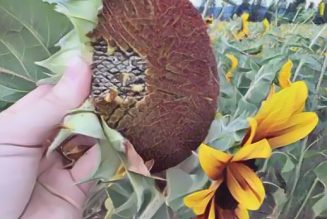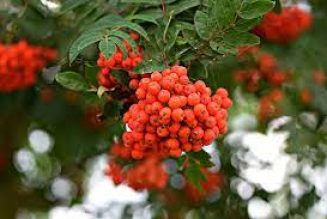Four Methods of Drying Plants and Herbs
Plants and herbs dried in a controlled heat environment are generally superior to ones dried in the sun with reference to their flavor, color, and nutrition. Another plus for drying the plants in controlled heat is they’ll be free from bugs and flying insects. (Less cleaning afterwards.) But like all good things, controlled heat drying requires additional equipment, so that means additional cash outlay the first time through the process. Following are factors you should consider when deciding whether to dry naturally or with a controlled heat method: For Natural drying, try:
- Sun Drying. Of course, this method depends on weather, temperature and the relative humidity outside. If you live in a hot, dry climate, sun drying may be very successful. Its advantage is the cost. The only investments are drying trays, netting to protect against insects and the food itself. Its main disadvantage is time. What would take 6 to 10 hours to dry using another method may take 3 to 5 days in the sun. To avoid scorching, move the food into the shade to finish when it is about two-thirds dry.
- Solar Drying. This method is like sun drying only better. You’re still dependent on the weather, but the sun’s rays are concentrated so drying time is shortened. This method makes use of glass to concentrate the sun’s rays. For example, you could lay the tray of food to be dried on the back dashboard, and that would then use the back window of the car (with the windows open slightly to allow air flow) to complete your drying process. Of course, you can get as creative as you want with this method, even building your own solar oven.
- Note: Before you store any herbs that have been dried in the sun or open air, heat them in an oven at 160 degrees for 10 minutes to kill any insects or insect eggs that may have accumulated. Store dried herbs in a cool dry place in glass jars or tins. Also, leaves and seeds retain more flavor if they are stored whole and crushed before use.
For Controlled-Heat, try:
- Oven Drying. This is small-scale drying. It’s a good choice if you want to dry only 4 to 6 pounds of produce at a time. Disadvantages are the cost of the energy and having the oven on constantly. Oven drying takes 2 or 3 times longer than a dehydrator. You must rotate and shift trays every half hour and turn the food occasionally to assure even drying. To avoid scorching food, turn off the heat when drying is almost completed and open the oven door wide.
- Dehydrator Drying. This is a more reliable method. Dehydrators should have a heat source, thermostat, and some method of air circulation. They can be purchased or made. Purchasing is, of course, easiest, but will also probably be the most costly.
- You can also use toaster ovens (often called “convection ovens) to dry food. Just be sure to set the cycle on “convection.” Do NOT dry food by microwaving it. Moisture can’t escape from a microwave oven, and, with the differences in drying times (especially for roots), food could get so hot they ignite.
When to Harvest
Flowers
Gather flowers as they first begin to open, and dry them in the shade. Prepare a tray lined with paper and then carefully cut the flowerhead from the stalk, removing any insects, dirt, or other trash. Placing the cleaned flowerheads on the tray, leave them to dry in a warm place. Turn them regularly, so they dry evenly all over. Once dried, store them away from the light in a jar with a tight lid. If you can’t find a nice, dark place to store them, consider storing them in dark (brown) jars. These will naturally filter out the light.
Herbs
Rosemary can be gathered at any stage. Borage, coltsfoot, cowsslip, fenugreek, lungwort and sweet violet should be gathered after they have flowered. As a general rule, leaves of herbs and flowers should be gathered before the flowers have opened. This is the point at which the leaves are richest in their essential oils. These leaves should be gathered early in the day, before the sun is too strong. The tip growth is best for drying so cut the stems about 6 inches below the flower buds. Once you have harvested the leaves, dry them in a shady cool place with plenty of ventilation and away from any heat sources. As an example, think of the old tobacco barns in the south and midwest. Inside your house or outside makes no difference, so long as the airing requirerments are met. Once the leaves are dry crumble them, tossing out stems and any other trash, and store them away from the light in a jar with a tight lid. You can also dry small bunches by hanging them with the leaves down so the oils will flow from the stems into the leaves. Leaves are best when dried for 3 or 4 days, but if they aren’t dry in 2 weeks put them in a 100-degree oven until thoroughly dry. When dry, remove leaves from the stems. Once you start the drying process, be sure to follow it to the end, otherwise mold can begin to grow on the leaves.
Roots
Gather roots in the fall, as the plant begins to go dormant. Wash each root thoroughly with a vegetable scrub brush and, as above, toss any dirt, bugs, or other trash you may find, and prepare a tray lined with paper. Before laying out your roots on the tray, it’s advisable to chop the root into smaller length-wise pieces to speed up the drying process. Heat roots on the tray in the 100 degree oven for 6 to 8 hours. Roots should be brittle and hard when they are dry. Note: The exception to this rule is dandelion roots, which should be gathered in the early spring before they bloom.
Seeds
Seeds should be gathered as they ripen, usually in the fall. Seedheads should be hung to dry inside a paper bag. Don’t use plastic as any condensation that gathers could lead to mildew and cause the seeds to rot. Once dry separate the seeds from their cases and store in the same manner as leaves and flowers. The easy way to dry seeds such as anise, caraway, coriander, cumin, dill and fennel is to hang the whole plant upside down inside a paper bag. The bag will catch the seeds as they dry and fall from the pods. To dry Sunflower seeds, start by selecting sunflowers with dry stalks. Remove seeds. If plants were sprayed, wash the seeds and pat dry. Spread on cheesecloth or screening. Dry in a warm place for at least a week. An alternate method is to hang the flowers in a cool, dry place for a month or until the seeds pop out. Tie a cloth or mesh bag around the flower to catch seeds that fall. The seeds must be thoroughly dry. To toast the seeds, measure 4 cups seeds and 1/2 cup salt into saucepan. Add water to cover. Bring to a boil; boil 5 minutes. Drain; spread on absorbent paper to dry. Place in shallow baking pan; bake at 325° F for 25-30 minutes, stirring occasionally. Cool thoroughly. Store in a dry place in an airtight container like a plastic bag or glass jar. One flower makes about 3 cups of seeds.
Miscellaneous Notes
- Before you store any herbs dried in the sun or open air, heat them in an oven at 160 degrees for 10 minutes to kill any insects or insect eggs that may have accumulated.
- Store dried herbs in a cool dry place in glass jars or tins.
- Leaves and seeds retain more flavor if they are stored whole and crushed before use.
- To substitute dried herbs for fresh ones, use 1/3 to 1/2 teaspoon of dried herbs for 1 tablespoon of fresh.
- Store dried food a maximum of 6 months to 1 year in airtight containers. The higher the temperature, the shorter the storage time.
- Freeze drying foods guarantee a longer storage time and protects against mold
























